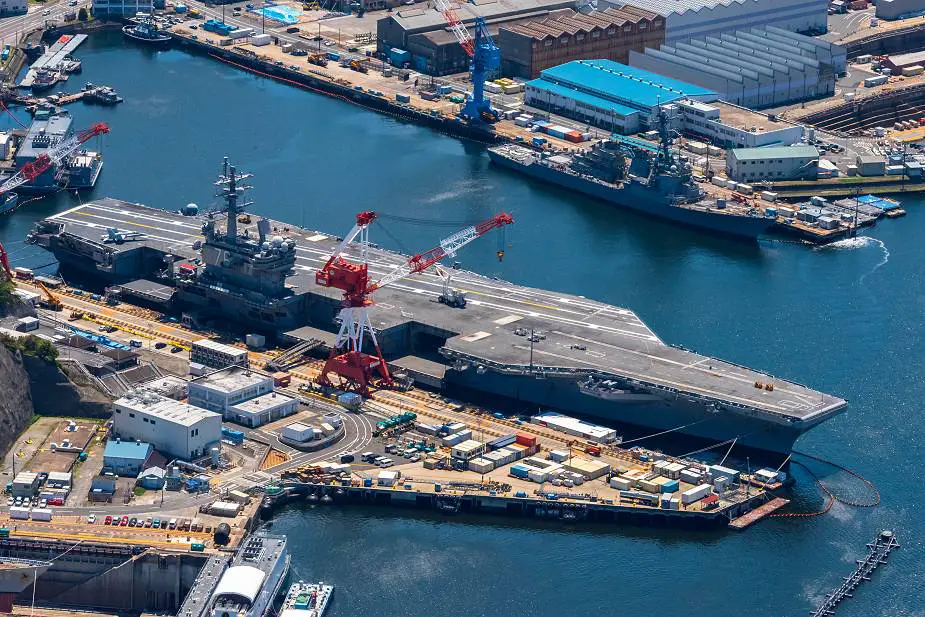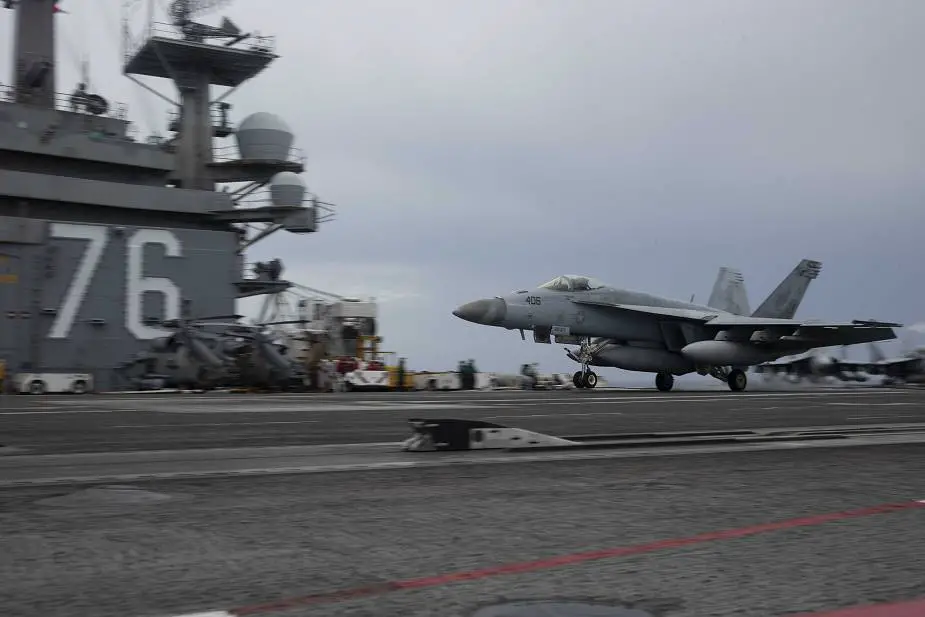Breaking news
Ronald Reagan Carrier Strike Group 5 departs for 2020 operational deployment.
The Ronald Reagan Carrier Strike Group 5 departs for 2020 operational deployment. Reagan, Carrier Air Wing (CVW) 5, and Destroyer Squadron (DESRON) 15 represent the cornerstone of the strike group's capability to sustain presence, project power, fight, and win decisively from the sea.
Follow Navy Recognition on Google News at this link
 An aerial view of the aircraft carrier USS Ronald Reagan (CVN 76) at Commander, Fleet Activities Yokosuka (CFAY), Japan, April 25, 2020. (Picture source U.S. Navy)
An aerial view of the aircraft carrier USS Ronald Reagan (CVN 76) at Commander, Fleet Activities Yokosuka (CFAY), Japan, April 25, 2020. (Picture source U.S. Navy)
Carrier Strike Group 5, also known as CSG 5 or CARSTRKGRU 5, is the U.S. Navy carrier strike group assigned to the United States Pacific Fleet and permanently forward deployed to the U.S. 7th Fleet.
The Strike Group Flagship is the Nimitz-class aircraft carrier USS Ronald Reagan (CVN-76) which also embarks Strike Warfare Commander, Carrier Air Wing Five (CVW 5) and its nine squadrons. As of June 2015, CSG 5 includes three Ticonderoga-class cruisers and Destroyer Squadron Fifteen (CDS 15), which serves as the Sea Combat Commander and is responsible for eight assigned Arleigh Burke-class destroyers.
The USS Ronald Reagan (CVN-76) is a Nimitz-class, nuclear-powered aircraft carrier in service with the United States Navy. The contract to build Ronald Reagan was awarded to Northrop Grumman Newport News Shipbuilding and Dry Dock Company in Newport News, Virginia, on 8 December 1994, and her keel was laid down on 12 February 1998. It was commissioned on 12 July 2003 at Naval Station Norfolk, with Captain J. W. Goodwin in command.
The USS Ronald Reagan departed San Diego on January 4, 2006 for her maiden deployment to conduct naval operations in support of the Global War on Terrorism. This included supporting the missions Operations Iraqi and Enduring Freedom.
The USS Ronald Reagan can carry a total of 90 fixed wing and helicopters. The weapon systems of the CVN-76 include 16–24 × RIM-7 Sea Sparrow air defense missile and Phalanx CIWSs for defense against airborne threats such as anti-ship missiles and helicopters or RIM-116 Rolling Airframe Missile (RAM) is a small, lightweight, infrared homing surface-to-air missile.

An F/A-18E Super Hornet attached to Strike Fighter Squadron (VFA) 195 lands on the flight deck of the Navy's only forward-deployed aircraft carrier USS Ronald Reagan (CVN 76). (Picture source U.S. Navy)
Following sea trials, Reagan commenced deployment by on-loading more than 1,000 tons of ordnance – enough combat power to cause the ship to sit five-inches lower on the waterline – in addition to personnel and aircraft from aviation squadrons within CVW-5. With more than 5,000 crew embarked, and 60-plus aircraft, Reagan is capable of sustaining around-the-clock maritime operations.
While underway, the Ronald Reagan Carrier Strike Group will work alongside allies and partners to strengthen regional capabilities, further develop warfighting concepts, and improve distributed maritime operations that provide layered defense options to protect shared interests. Together, the U.S. and its allies promote peace and prosperity by supporting international norms.
The United States remains committed to protecting the rights, freedoms, and lawful uses of the sea, and the ability of all countries to exercise those rights.
The crew and support staffs of the Ronald Reagan Carrier Strike Group continue to demonstrate that no challenge is beyond reach and that together, we can achieve Peace Through Strength.
The Ronald Reagan Carrier Strike Group is forward-deployed to the U.S. 7th Fleet area of operations in support of a free and open Indo-Pacific region. U.S. 7th Fleet is the largest numbered fleet in the world, and with the help of 35 other maritime-nation allies and partners, the U.S. Navy has operated in the Indo-Pacific region for more than 70 years, providing credible, ready forces to help preserve peace and prevent conflict.


























